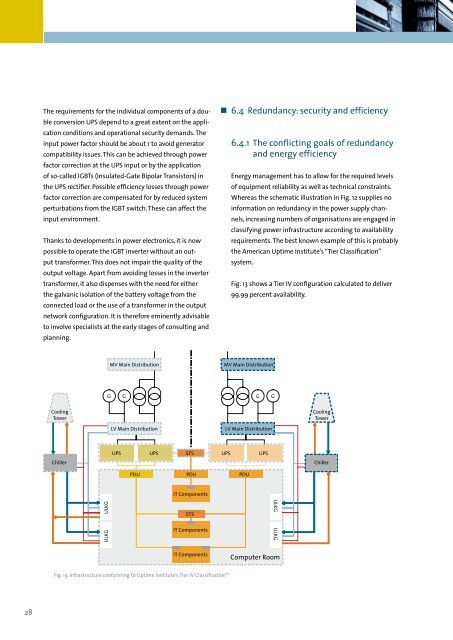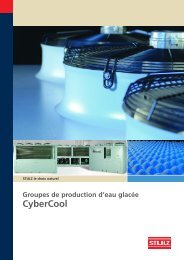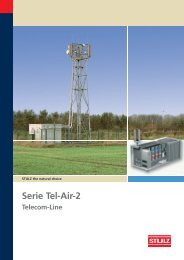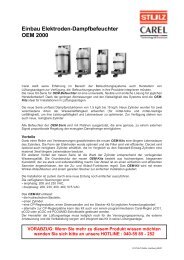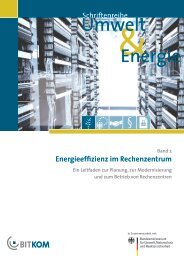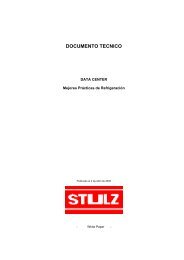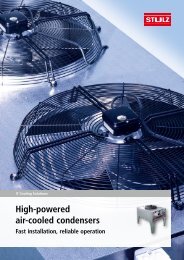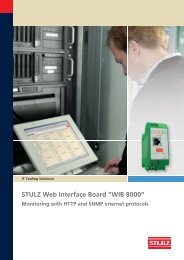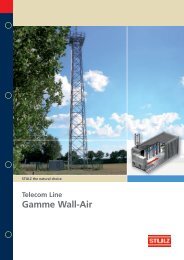Climate protection needs energy efficient data centers - Stulz GmbH
Climate protection needs energy efficient data centers - Stulz GmbH
Climate protection needs energy efficient data centers - Stulz GmbH
You also want an ePaper? Increase the reach of your titles
YUMPU automatically turns print PDFs into web optimized ePapers that Google loves.
The requirements for the individual components of a doubleconversion UPS depend to a great extent on the applicationconditions and operational security demands. Theinput power factor should be about 1 to avoid generatorcompatibility issues. This can be achieved through powerfactor correction at the UPS input or by the applicationof so-called IGBTs (Insulated-Gate Bipolar Transistors) inthe UPS rectifier. Possible efficiency losses through powerfactor correction are compensated for by reduced systemperturbations from the IGBT switch. These can affect theinput environment.Thanks to developments in power electronics, it is nowpossible to operate the IGBT inverter without an outputtransformer. This does not impair the quality of theoutput voltage. Apart from avoiding losses in the invertertransformer, it also dispenses with the need for eitherthe galvanic isolation of the battery voltage from theconnected load or the use of a transformer in the outputnetwork configuration. It is therefore eminently advisableto involve specialists at the early stages of consulting andplanning.• 6.4 Redundancy: security and efficiency6.4.1 The conflicting goals of redundancyand <strong>energy</strong> efficiencyEnergy management has to allow for the required levelsof equipment reliability as well as technical constraints.Whereas the schematic illustration in Fig. 12 supplies noinformation on redundancy in the power supply channels,increasing numbers of organisations are engaged inclassifying power infrastructure according to availabilityrequirements. The best known example of this is probablythe American Uptime Institute’s “Tier Classification”system.Fig. 13 shows a Tier IV configuration calculated to deliver99.99 percent availability.MV Main DistributionMV Main DistributionG G G GCoolingTowerCoolingTowerLV Main DistributionLV Main DistributionChillerUPS UPS STSUPS UPSPDU PDU PDUChillerIT ComponentsULKGSTSULKGULKGIT ComponentsULKGIT ComponentsComputer RoomFig. 13: Infrastructure conforming to Uptime Institute’s Tier IV Classification 1628


